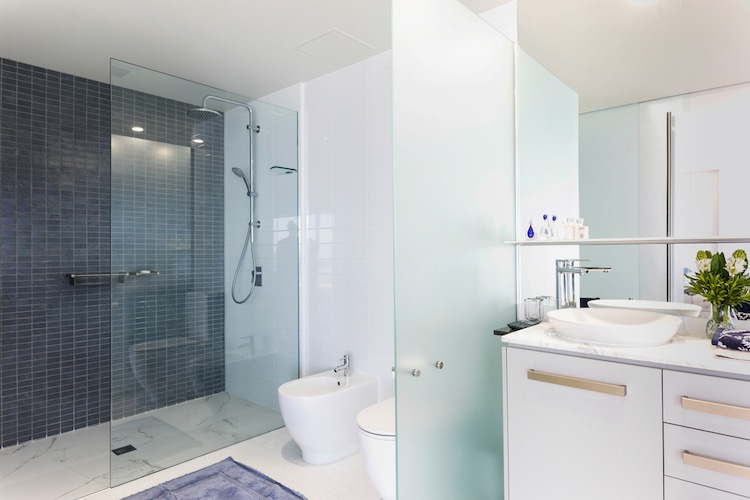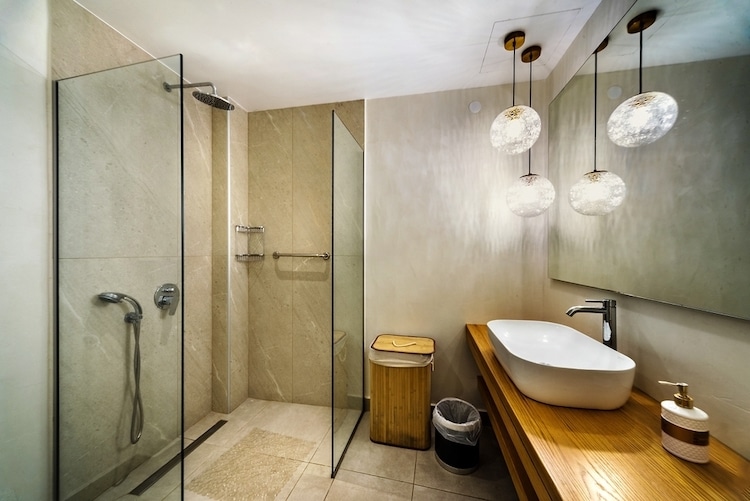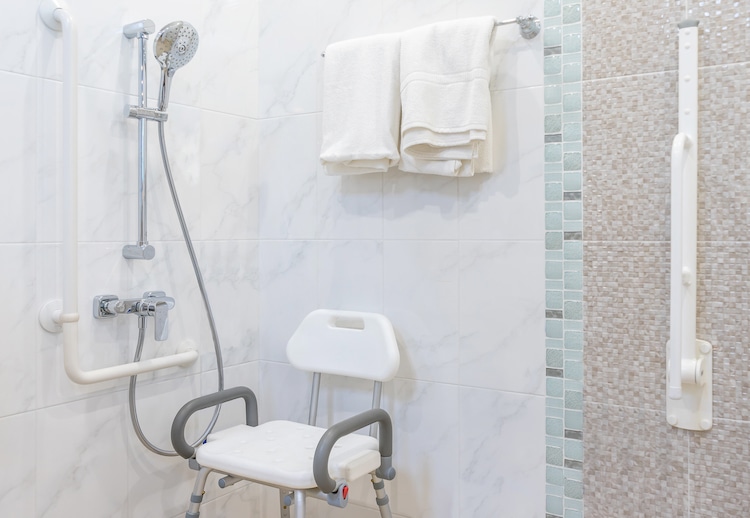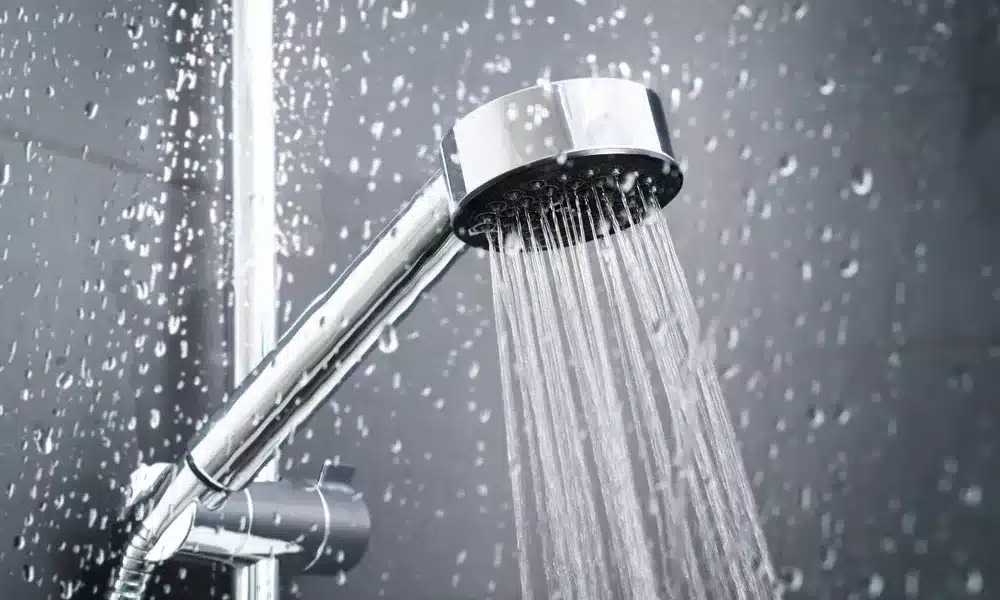A Guide to Disabled Showers
Updated July 2024
Managing everyday life with a disability can be extremely challenging. Showering can present significant difficulties when dealing with a lifelong condition or a new mobility impairment. Fortunately, these issues can be addressed by selecting disabled showers based on specific needs.
If you’re looking for safe, well-designed shower rooms for disabled users or you are considering replacing a standard shower or bath, this guide will help you find the ideal shower for your mobility needs.
Key Considerations When Choosing a Disabled Shower
When choosing a shower for a disabled person, consider the following factors:
1. Bathroom Space: Assess the size of your current bathroom and the space available for a new shower.
2. Physical Abilities: Determine how long you can stand, if you can lift your legs over the bath, and how far you can reach comfortably.
3. Type of Disability: Identify any additional features or equipment needed based on your disability.
4. Disruption Level: Installing over-the-bath showers is less disruptive than walk-in showers or wet rooms, but consider your longer-term mobility needs over the inconvenience of any disruption.
5. Cost: Over-the-bath showers are typically more affordable, while wet rooms are more expensive. Walk-in showers offer a mid-range option.
6. Style: Choose a functional and aesthetically pleasing shower to enhance your showering experience.
7. Household Use: If others will use the shower, ensure it accommodates their needs without inconvenience.
Regardless of which disability shower option you choose—an over-the-bath shower, a walk-in shower for disabled users, or a wet room—always consider how your needs could change in the future. Climbing in and out of the bath can be dangerous or impossible, and taking a shower can be difficult, but mobility bathrooms with accessible showers can change how you or someone you care for feels about showering and using the bathroom independently.
At Age Care Bathrooms, we are dedicated to enhancing the safety and comfort of showering for individuals with disabilities, limited mobility, and wheelchair users. With many options and features available, selecting the ideal accessible walk-in shower can be daunting. Let’s take a closer look at the various types and features of disabled showers and how they can support your specific requirements.
If you have any additional queries, don’t hesitate to call our friendly team of bathroom experts for advice or book your free home survey and no-obligation quote.

5 Types of Accessible Showers for Disabled People
Walk-in showers for elderly and disabled individuals are thoughtfully designed to meet various mobility needs and can be tailored to complement your current bathroom setup.
Whether your bathroom space is limited or generous, disabled showers can be designed to perfectly integrate with your bathroom.
Here are five of the most popular types of showers for disabled users and how they can support various levels of mobility.
Types of accessible showers: Quick search
- Low-Level accessible showers
- Walk-in baths with showers
- Level access showers and wet rooms
- Accessible showers with cubicles
- Thermostatic mixer showers.
1. Low-level accessible showers
A low-level shower is an excellent choice for individuals with limited mobility who can manage a small step. These showers feature trays that are no more than 40mm high, making it significantly easier to step in and out, thereby reducing the risk of tripping.
Low-level showers not only enhance safety but also offer an enclosed shower area, making them ideal for small bathrooms. They are particularly well-suited for people who do not require a wheelchair but still benefit from an accessible and convenient showering solution.
Low-level showers are easy and fast to install in place of a standard shower with a conventional tray or a bath and are one of the most popular types of disabled showers for people with reduced mobility.
2. Walk-in baths with showers
If you like to have the option to soak in a bath or take a shower, walk-in baths with a shower above can make a huge difference if you have mobility issues. For people who have more severe mobility disabilities, showers can be fitted over an easy riser walk-in bath. This type of walk-in bath features a rising ergonomic seat to make it easier and safer for wheelchair users or people who require skeletal or muscular support.
Additionally, the shower controls are positioned just above the bath taps to make it easy to reach them while sitting down.
During the installation of an over-bath shower, some plumbing will be involved, but unless you swap your bath, this type of shower will only usually require one day to install. When a new walk-in bath and over-bath shower are required, installation typically takes no more than three days. If you decide to keep your current bath, we recommend installing a seat or a transfer board that fits across it and grab rails to help you get in and out of the bath more safely.
3. Level access showers and mobility wet rooms
Level access showers, also known as walk-in showers, feature a shower area that is flush with the bathroom floor, eliminating the need for a shower tray and significantly reducing the risk of trips and falls. These showers can be seamlessly integrated into a conventional bathroom with a bath, provided there is sufficient space.
Alternatively, converting a smaller bathroom into a wet room can maximise the use of limited space. Mobility wet rooms, designed specifically for disabled users, offer an open shower area free from the constraints of shower cubicles, making it easier for wheelchair users to manoeuvre and shower comfortably.
4. Accessible showers with cubicles
Accessible showers with cubicles are designed to provide privacy. When selecting which type of cubicle is most suited to your needs, you have a few options. Corner cubicles fit in the corner of your bathroom and are ideal for minimum space.
Alternatively, full cubicles have three sides and a cubicle door and can be placed anywhere you want to install a walk-in shower in your bathroom.
Related Reading: The Different Types of Shower Enclosures
5. Thermostatic mixer showers
An essential safety feature for accessible showers is the use of thermostatic mixer showers. These showers preheat water from your boiler or hot water tank and automatically adjust to pressure changes, ensuring you don’t get scalded if someone else in the house uses cold water while you’re showering. Another excellent option is an electric shower, which maintains a consistent water temperature despite fluctuations in water pressure.
For visually impaired people, we recommend choosing a shower unit that is RNIB-approved. These showers are specifically designed to be easier to use for those with sight loss, featuring raised markings on the buttons and audible alerts to indicate when the shower is on or off.
Related Reading: What Are Digital Showers?

Enhancing shower safety for mobility challenges: Quick search
- Mobility aids for accessible showers
- Seating for accessible showers
- Showering and seating safety tips
- Choosing the perfect shower temperature.
Mobility aids for accessible showers
If getting around your shower is becoming difficult, it’s time to make a change. To improve your shower and bathing experience, we provide a range of mobility aids and safety features. Below are some of the most popular mobility aids that, when used with accessible showers, can help keep you or someone you care for safe and comfortable when showering.
- Shower head holders: Adjustable shower head holders allow the shower head to be positioned at a height that suits the user.
- Shower screens and enclosures: For additional privacy, a shower screen or enclosure can be portable or fixed. They come in various configurations and are ideal for wet rooms and walk-in showers.
- Long-handled bathing aids: There is a wide selection of long-handled bathing aids with handles of different lengths, such as sponges and bath brushes. For a person with limited mobility, they can make washing easier and reduce the need to stretch or twist, which may cause discomfort and increase the risk of a fall.
- Leg lifters: Moving your legs when seated on a chair or swivel chair over the bath’s rim can be easier with leg lifters. You use a reinforced strap with a loop at one end and then physically lift your leg into the bath.
- Anti-slip mats and flooring: In every bathroom, anti-slip mats or anti-slip flooring can help prevent slips and falls. We have many different anti-slip flooring options and supply a range of anti-slip mats.
- Grab bars: Provide extra support around the bathroom. These are often placed on walls around the shower or bath area and come in two types:
- Horizontal rails: Great for both walk-in showers and baths. They can help you push up from a sitting position and also provide additional support when sitting down.
- Vertical rails: They can be placed around the bathroom for extra support. Having them next to a shower seat can be very helpful and will stop you from slipping.
- Transfer boards: Also known as a sliding board or transfer slide, these are designed to help disabled people move safely and easily from a wheelchair to a bath or shower seat. They are particularly useful for those with limited mobility or strength, enabling them to transfer independently or with minimal assistance.
- Shower boards: These are designed to fit over the top of your bath and act as a seat so you can sit down and shower in your bath. They are suitable for most styles of baths without fixed shower screens.
- Swivel bath seats: If you require extra support, swivel bath seats fit over the bath and swivel inwards. They are great for back support and also act as an armrest. These seats are set in a fixed position and do not lower into the bath.
Related Reading: Elderly Bathing and Hygiene Guide
At Age Care Bathrooms, our, friendly team of bathroom experts can help you pick additional mobility aids, features and fittings that suit your needs. This may be adding a shower seat, installing anti-slip flooring in the rest of your bathroom or swapping your toilet for a low-level disabled toilet.
Please get in touch with our caring team of mobility bathroom experts to arrange a free home survey and no-obligation quote.
Seating for accessible showers
Sitting down in walk-in showers can change showering from a difficult experience to an enjoyable one in comfort and independence. Various seating options are available in showers for disabled users, and the best shower seat will depend on your individual needs.
Below are five main shower seating options to consider:
1. Shower stools: These are available in various sizes and styles, including corner shower stools. Folding shower stools are also available, which take up less space if you want to put them away when not in use.
2. Wall-mounted shower seats: These are classified into two types: static and hinged. Certain models will have back support and armrests, but you should check with the manufacturer to see if there are any weight restrictions.
3. Shower chairs: You can choose from static or mobile shower chairs in all shapes and sizes. All shower seats will come with rubber cups on the legs to prevent any slipping and may be more suitable for a person who can’t use a wall-mounted shower seat due to weight restrictions. For extra comfort, most shower chairs come with armrests and padded seating.
4. Shower chairs on wheels: They are perfect if you want to move the chair around and have the security of knowing it will not move once you have put it where you want to sit in the shower. These tend to have metal frames and plastic seats and are generally smaller than a standard shower chair.
5. Self-propelled shower chairs: Available in many styles and designs, these are typically multi-functional. A popular choice is a self-propelled commode chair, which can be folded when not in use. For independence and dignity, they are designed so the user can propel themselves into the shower. Self-propelled shower chairs can also be pushed by someone else and will travel across carpet, tiles and lino.
You should always check to see if your shower tray or bath is capable of having a seat on it with the added weight of a person. Why not book a free home survey and no-obligation quote? We can help you find the shower and seating most suited to your needs and preferences.

Showering and seating safety tips
Improving shower safety for those with mobility issues involves several key considerations. Here are some things that can help make showering safer for people who are elderly or have disabilities.
- Ensure that the shower seat is stable and does not wobble; a fixed folding shower seat is an excellent option if other people in the household prefer to stand in the shower.
- Keep showering products, such as soap, razors and shampoo, in a holder on the wall close to the shower controls for easy access.
- Take your time getting on and off the shower seat, and use grab bars and anti-slip mats to help prevent slips and falls.
- Distribute weight evenly and avoid sitting on the edge of the shower seat or chair.
Related Reading: 10 Essential Bathroom Aids for the Elderly and Disabled
Choosing the perfect shower temperature
According to the Chartered Institute of Plumbing and Heating Engineering (CIPHE), shower temperature should not exceed 41°C. When the temperature is higher than this, it may cause a drop in blood pressure, making the user feel dizzy and lightheaded.
The easiest way to judge if the temperature is too high is by looking at the colour of the skin. When the skin gets red or flushed, the temperature probably needs to be reduced. We highly recommend installing a thermostatic temperature gauge to guarantee the shower is always at the optimum temperature.
Advice and Support from Age Care Bathrooms
Making bathroom modifications for a disabled person doesn’t have to be a stressful process. At Age Care Bathrooms, you don’t have to sacrifice design for functionality. Our team of bathroom specialists is dedicated to helping you choose the best accessible shower or mobility bathroom to meet your needs and budget.
We offer a wide range of disabled showers designed for the elderly, disabled people and wheelchair users, ensuring that showering is a comfortable, dignified and independent experience. Our stylish and practical solutions allow you to enjoy your bathroom without compromise. Whether you need a walk-in shower, a mobility wet room or a customised solution, Age Care Bathrooms has the expertise and options to make your bathroom safe and accessible.
At Age Care Bathrooms, we have been installing disabled showers for over 30 years. To schedule your free home survey and discover more about our mobility bathroom adaptations, call us today at 0800 999 8994 or complete our online enquiry form.
If you need a walk-in-shower due to mobility concerns or a disability, please don’t hesitate to contact us today.


















